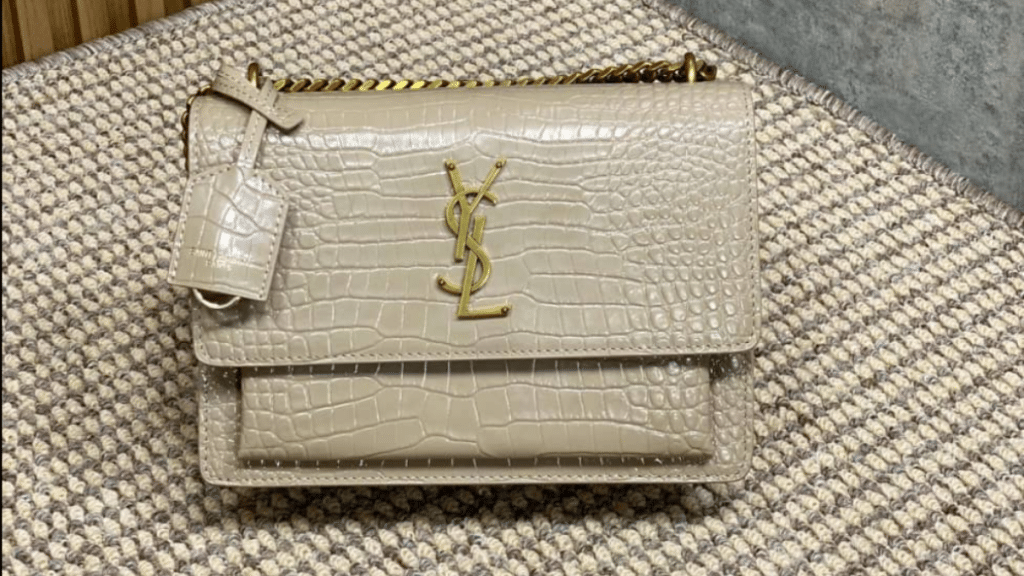In the age of fashion democratization, replica designer bags have evolved from shady alley purchases to surprisingly refined alternatives that reflect craftsmanship, aesthetics, and consumer autonomy. One brand frequently replicated for its sleek lines and iconic monogram is Yves Saint Laurent (YSL). Whether you’re drawn to the Envelope, the Loulou, or ysl sunset series, the allure of a well-crafted replica is hard to resist—especially when authentic versions can cost upwards of several thousand dollars.
However, the journey to finding a replica that matches expectations is filled with potential missteps. With a saturated market ranging from low-effort knockoffs to meticulous re-creations, how do you separate quality from compromise? Here are five common mistakes to avoid when shopping for a replica YSL bag.
1. Confusing Replica with Counterfeit
One of the most common and dangerous misconceptions is assuming that all replica products are equal. Some consumers equate “replica” with “counterfeit,” but there is a nuanced distinction. A counterfeit typically uses logos and trademarks to deceive consumers into thinking a product is genuine. In contrast, a replica can be an open homage, offering the look and feel of a designer bag without falsely representing its authenticity.
Understanding this distinction is essential when shopping for a replica YSL bag. Transparent sellers will never claim their products are original, but instead focus on replicating design and quality as closely as possible. Choosing sellers who misrepresent replicas as authentic often leads to legal, ethical, and quality concerns.
2. Ignoring Material Quality and Craftsmanship
Not all replicas are created equal. One of the most significant pitfalls is focusing only on surface aesthetics without evaluating deeper aspects like leather type, stitching, hardware feel, and structure.
Authentic YSL bags are praised not only for their visual appeal but also for their tactile quality—smooth calfskin, soft lambskin, brushed metal logos, and hand-stitched finishes. High-end replicas often use top-grain leather that mimics this luxury, while low-end versions may cut costs by using synthetic materials that peel or crack over time.
Pay attention to product descriptions, close-up photos, and customer reviews. Details like sharp corner edges, uneven quilting, and squeaky hardware are red flags. A good replica should feel as sturdy and satisfying as it looks.
3. Overlooking Reliable Sourcing Channels
In today’s global marketplace, replicas are available through various online outlets, but not all sellers are trustworthy. A common mistake is purchasing from vendors who lack a visible track record, clear product images, or buyer protection policies.
Instead of relying on flashy Instagram ads or mysterious direct messages, informed buyers use community-sourced knowledge. Niche forums, subreddits, and replica review blogs provide real-user feedback and photo comparisons. Many of these communities maintain databases of reputable sellers, categorized by bag type and quality tier.
Interestingly, platforms like China Taobao have also gained international attention. While primarily a domestic e-commerce site, some Taobao shops—especially those discussed in fashion forums—are known for offering premium-grade replicas with meticulous detail and responsive service. As with any platform, due diligence is crucial: reading verified buyer reviews, checking seller ratings, and avoiding listings that use stock photos.
4. Disregarding Bag Models and Their Complexity
YSL’s bag catalog is incredibly diverse, ranging from minimalist evening clutches to oversized quilted totes. Each model presents different challenges for replication. For example, the YSL Loulou features intricate padded chevrons, requiring careful foam structuring and accurate stitching patterns, while the Uptown clutch demands sharp edge finishing and subtle logo placement.
Many replica producers excel at specific models and sizes. For example, the Sunset medium is often replicated more accurately than the large size due to strap proportion and weight balance. Buyers who don’t research model-specific reviews may end up with distorted shapes, uneven proportions, or bags that don’t match real dimensions.
Choosing the right model means understanding its replication difficulty and choosing sellers with proven experience replicating that specific bag.
5. Falling for the “Too Good to Be True” Trap
Let’s be honest—if a listing shows an “authentic-looking” YSL bag for under $40, there’s a high chance it’s either misrepresented or extremely low quality. While not every great replica must cost a fortune, price does correlate with quality.
Reasonable expectations matter. A well-made replica YSL bag with genuine leather, solid hardware, proper packaging, and good stitching typically falls in the $100–$300 range. Cheaper options might compromise on multiple fronts, including uneven logos, unbalanced straps, and vinyl-like textures.
It’s important to distinguish between finding a good value and chasing unrealistic bargains. A smart buyer evaluates photos critically, looks for video proof when possible, and doesn’t hesitate to ask sellers for close-up shots of stitching, zippers, and interior labels.
A Deliberate, Informed Choice
Today’s fashion consumers are not passive—they’re informed, value-conscious, and willing to challenge traditional notions of exclusivity. Buying a replica bag is no longer a hidden act of deception; for many, it’s a conscious lifestyle choice that balances appreciation for design with budget, sustainability, or even philosophical considerations.
By avoiding the five mistakes outlined above—misunderstanding definitions, overlooking quality, buying blindly, ignoring model differences, and chasing impossible deals—buyers can approach the replica space with confidence and clarity.
Far from being a simple shortcut, a good replica bag can serve as a gateway into fashion literacy. It encourages research, attention to craftsmanship, and an evolving understanding of what “luxury” really means. In that way, a replica YSL bag isn’t just a fashion accessory—it’s a reflection of changing values in modern style culture.
As conversations around replicas continue to evolve, it’s clear that this is not just a fleeting trend—it’s a reflection of how modern consumers approach ownership, aesthetics, and value. In many cases, the same buyer who explores a replica YSL bag may also be comparing leather quality and craftsmanship in a fake Gucci design, not out of disloyalty to brands, but out of a desire to access beauty without traditional gatekeeping. What once existed in the shadows is now part of an open dialogue about taste, autonomy, and the democratization of fashion.
